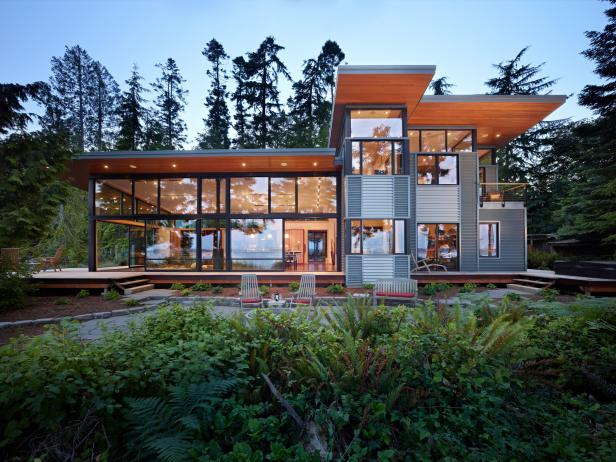From Classic to Contemporary: A Guide to Architectural Home Styles
When it comes to finding the perfect home, the architecture plays a significant role in defining not only the physical structure but also the character and ambiance of the space. Architectural home styles span a wide spectrum, ranging from classic and timeless designs to bold and innovative contemporary creations.
In this comprehensive guide, we’ll take you on a journey through the diverse world of architectural home styles, showcasing their unique characteristics and histories.
Classic architectural home styles
1. Colonial Revival
- Time Period: Late 19th century to mid-20th century
- Key Features: Symmetry, brick or wood siding, gabled roofs, and decorative elements like columns and shutters.
Colonial Revival homes harken back to the early American colonial period, with an emphasis on tradition and elegance. They often feature spacious interiors and a sense of timeless charm.
2. Victorian
- Time Period: Mid-19th century to early 20th century
- Key Features: Ornate details, turrets, bay windows, steep gables, decorative woodwork, and vibrant paint colors.
Victorian homes are known for their romantic and whimsical aesthetics. They were a product of the Victorian era’s fascination with intricate ornamentation and decoration.
3. Craftsman
- Time Period: Early 20th century
- Key Features: Exposed rafters, handcrafted woodwork, low-pitched roofs, overhanging eaves, and a focus on natural materials.
Craftsman homes emphasize simplicity and craftsmanship. They often have cozy, welcoming interiors and an emphasis on the use of wood and earthy tones.
4. Tudor Revival
- Time Period: Late 19th century to early 20th century
- Key Features: Half-timbered exteriors, steeply pitched roofs, decorative chimneys, and leaded glass windows.
Tudor Revival homes evoke the charm of medieval English cottages. They have a distinctive, storybook-like quality that appeals to those who appreciate history and character.
5. Mediterranean Revival
- Time Period: Early 20th century
- Key Features: Stucco exteriors, red tile roofs, arched doorways, wrought iron details, and lush landscaping.
Inspired by the Mediterranean region, these homes exude a sense of warmth and luxury. They often feature inviting outdoor spaces and a strong connection to nature.
Contemporary architectural home styles
6. Mid-Century Modern
- Time Period: Mid-20th century
- Key Features: Clean lines, large windows, open floor plans, flat planes, and an integration of indoor and outdoor spaces.
Mid-Century Modern homes are a celebration of simplicity and functionality. They are marked by an emphasis on minimalism and a focus on the surrounding environment.
7. Contemporary
- Time Period: Late 20th century to present
- Key Features: Innovative materials, asymmetrical designs, open living spaces, large expanses of glass, and a focus on sustainability.
Contemporary homes push the boundaries of design and technology. They prioritize clean, uncluttered aesthetics and often incorporate eco-friendly features.
8. Modernist
- Time Period: Early 20th century to present
- Key Features: Functional, geometric designs, the use of materials like concrete and steel, large windows, and flat roofs.
Modernist architecture is a celebration of form and function. It rejects unnecessary ornamentation in favor of practical, often striking designs.
Finding your fit
As you embark on your journey to find the perfect home, understanding these architectural styles can help you narrow down your preferences and make an informed decision. Here are some tips to guide you:
- Consider your lifestyle – Think about how you live and what type of space would best suit your needs. Classic styles may offer more traditional layouts, while contemporary homes often feature open, adaptable spaces.
- Location matters – The architectural style of a home should harmonize with its surroundings. For example, a Mediterranean Revival home may not fit well in a neighborhood of Colonial Revival houses.
- Budget and maintenance – Different styles come with varying costs, both in terms of initial purchase price and long-term maintenance. Be sure to factor this into your decision.
- Personal aesthetics – Ultimately, your home should reflect your personal style and taste. Choose a style that resonates with you and makes you feel at home.
- Architectural integrity – If you’re considering a historic home, be prepared for the challenges of maintaining and restoring its original character.
Conclusion
Looking for the perfect architectural style when buying a house can be a challenge. From the traditional, classic charm of Colonial Revival and Victorian homes to the sleek lines of Mid-Century Modern and Contemporary designs, there are countless possibilities. One thing to keep in mind while looking for your dream home is the importance of choosing the right mortgage lender.
Fortunately, if you are in Tyler, TX, you won’t have to worry. With a trusted mortgage lender in Tyler, you can turn your architectural dreams into a reality. Your choice of architectural style can greatly influence your daily life and the way you experience your home.
Whether you’re drawn to the timeless beauty of classic styles or the cutting-edge innovation of contemporary design, there’s an architectural style out there to turn the home of your dreams into a reality.







